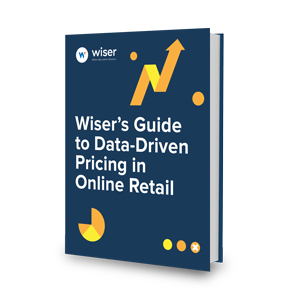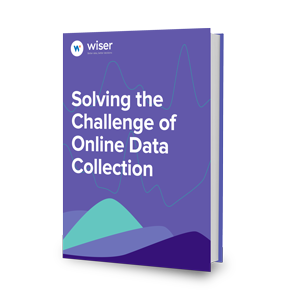Why Data Quality is Fundamental to Actionable Retail Intelligence
Standing in your kitchen, recipe in hand, you are tasked with baking an apple pie. On the counter are your ingredients: your pie crust, your apples (red delicious), sugar (brown), and spices (cinnamon, nutmeg, cloves). You have your directions. The oven is warming.
How will the finished pie taste? Will your baking result in the classic American apple pie? Will it look and smell the part? The answers to these questions depend on the quality of your baking, the process, and your ingredients. A slip here or there—such as the wrong ingredient—means no delicious dessert for you.
In retail, as in baking, the quality of the ingredients matters. Instead of apples and spices, we have brick-and-mortar visibility and online visibility. The wrong information, and it’s that much harder to execute a display activation, reprice to protect your margins, or enforce a MAP policy.
This is a lack of quality data.
Businesses attributed poor data quality to an average of $15 million in losses annually, according to Gartner research. On a larger scale, IBM reported that the U.S. economy as a whole loses $3.1 trillion per year due to poor data quality.
Do you know if the data you depend on is high-quality?
What is Data Quality?
Data quality is your perception that data is fit to serve its intended purpose. Whether or not data is deemed “quality” depends, in part, on your desired use of that data and whether it supports your decision-making efforts. Furthermore, data is quality if it is an accurate representation of the source of that data.
For example, high-quality retail data could be shelf-level insights that are confirmed to be from the correct stores and include photos of the shelves. Or, it could be the percent of competitor SKUs you can match online as you gather competitive pricing intelligence.
Bottom line: High-quality data is accurate, valuable, and works for you, not against you.


Why is Retail Data Quality Important?
The benefits of data quality come down to a numbers game. High-quality data can result in more customers, more sales, and more profit. It’s often easier to grasp how important retail data quality is by looking at it from the opposite direction.
According to Gartner Vice President Ted Friedman, “as organizations accelerate their digital business efforts, poor data quality is a major contributor to a crisis in information trust and business value, negatively impacting financial performance.”
In addition, a lack of quality data is also a major waste of time. Forrester reported that data analysts can spend as much as 40 percent of their time vetting and validating data before it can be trusted for decision-making.
Say you don’t validate your own data beforehand—you can still waste time and money. Gartner noted that businesses have experienced increased costs, inefficiencies, compliance risks, and more due to incorrect assumptions about the quality of their data. You could easily encounter a scenario where you make a decision based on low-quality data, then realize that the information was incorrect and have to return to the planning stage to start over.
The 1-10-100 Rule
This scenario is illustrated by the 1-10-100 Rule, first developed by Yu Sang Chang and George Labovitz in the early 1990s.
The 1-10-100 Rule represents the financial impact of poor data quality and the exponential growth of associated costs with a lack of timely correction. The 1 can represent $1, or how much it costs to validate data before it used to influence any business decision. Next is $10, or the cost of correcting improper data after it’s already infiltrated the business. And 100 is $100, or the significant cost to a business if poor data isn’t identified and rectified at all.
The goal of the 1-10-100 Rule is to demonstrate the exponential increase in financial costs depending on when you remove low-quality data from your decision-making process. It’s cheapest—and easiest—to fix problems the moment data is collected. It’s more expensive to fix it later, and it’s significantly more costly to never address data quality inside your business.
Therefore, the small cost of validating your retail data or acquiring validated data is well worth it, because those costs will only increase if you wait.
What is Data Quality?
- Your perception that data serves its intended purpose
- Whether data supports your decision-making process
- If the data is an accurate representation of its source
How Wiser Gets its Retail Data
Wiser collects its retail data in multiple ways, depending on the type of data in question. All methods allow for hands-on validation and review to ensure data is high-quality, accurate, and valuable to our customers.
Brick-and-Mortar Data
Brick-and-mortar data is primarily collected via a proprietary mobile application that connects retail businesses with consumers across the U.S., U.K., and Canada. The mobile app includes a network of more than 700,000 smartphone-enabled shoppers ready to:
- Answer questions about in-store conditions
- Provide feedback on displays, merchandising, and store associates
- Share photos of stores and shelves
- And much more!
The value of mobile crowdsourcing to conduct retail audits has several benefits. The mobile app connects you to a larger network of shoppers than other methods of collecting data, potentially increasing the number of survey responses and sample sizes. The data can be gathered in near real-time, with retail audits often returning data within a week or less. Furthermore, audits can be heavily configurable depending on your needs, either delving into specific stores, products, and shelves or targeting a broader segment of consumers to get general feedback on the industry.
All data is aggregated and shared with you via a custom online dashboard for easy viewing and analysis.
Online Data
For online retail, Wiser crawls the web for relevant, actionable data that allows you to make more informed decisions in line with your pricing, promotional, and merchandising strategies. Many organizations supplement this retail data with information collected in-store by a crowdsourced workforce, so you have the visibility you need to act with confidence.
In many cases, data is collected by crawling hundreds or thousands of websites for data on pricing, promotions, and more. Your products can be matched to competitor products for price comparisons or other details about that item. Wiser captures data related to price, of course, but also name of the product, brand, color, MPN, UPC, SKU, and other relevant details.
Like with brick-and-mortar data, all online data is aggregated and shared with you via a custom online dashboard.
Wiser is Data Quality
Wiser takes data quality incredibly seriously. In addition to all the benefits of high-quality data in general, the retail world is also faced with the reality that what constitutes quality data can change by the minute. Retail is fast-paced, and the data you have on stores, shelves, prices, and your competitors could be quickly outdated.
That means Wiser data must be up to the challenge of this industry in order to remain accurate and valuable. To achieve this, we proactively monitor data quality metrics to identify and correct any issues before they make it to your business.
For all brick-and-mortar data, we have an in-house team of data validators who review the information to confirm:
- That smartphone-enabled shoppers were actually in the store
- That those shoppers were in the correct store location
- That any included photos of in-store issues are valuable
On the online side, our data analysts are constantly refining the match rates of our pricing data: how many products in your catalog were matched on a given domain or across all domains. This is an ongoing process, as the analysts frequently review the data to ensure:
- No SKU matches are missed
- What is matched is accurate
- How many matches occurred compared to how many potential matches exist
While the concept of match rate remains incredibly important to online data accuracy, other metrics are just as valuable to your overall mission of acquiring high-quality data across both brick-and-mortar and online channels. There are:
Match Completeness
Of all your products that are carried on a specific domain, how many were matched by Wiser? This is calculated by dividing the number of matches by potential matches.
Match Accuracy
Of the total number of products matched online, how many were matched correctly? This is calculated by dividing the number of correct matches by number of store validations.
Mission Accuracy
Of the total number of datasets reviewed for customers—known as missions—how many were successfully validated?
Match Rate
As noted above, match rate is how many products in your catalog were matched on a given domain or across all domains. This is calculated by dividing number of matches by your total catalog.
Match rate is the tip of the iceberg, while the other three metrics provide the complete picture of whether your data can be considered high-quality. By constantly refining the process, we can improve the accuracy and scope of pricing data over time, while you will have total confidence in the value and quality of your data.
Conclusion
Is my data accurate? Does it benefit my business? Can I use it to make decisions and support our business objectives? With Wiser’s quality data, the answer is yes, yes, and yes.
Wiser Solutions’ data quality initiatives are created to protect your investments and contribute directly to your KPIs, thanks to:
- An in-house human validation team
- Proprietary algorithms and mobile application
- Support from a crowdsourced validation workforce
- An organizational emphasis on data quality metrics including and beyond match rate
With Wiser, you won’t have to worry about the quality of the data coming across your desk. With many layers of review and validation between data collection and analysis, the outliers and inaccuracies are removed so you can spend more time acting on the data. Never satisfied, Wiser is constantly researching and implementing more advanced and comprehensive solutions to ensure quality across all datasets.
Why turn to Wiser for trusted brick-and-mortar and online retail data? Because, like a complex recipe baked with the wrong ingredients, the finished product will miss the mark. Except, instead of apple pies, the finished product is your business. Any organization built on data-driven insights needs only the best, most accurate, and trusted data on the market. We’re ready to discuss how we can give you that high-quality retail data.
Actionable insights are a conversation away.
We’d love to give you immediate access to our Commerce Execution Suite, but first we need some information. Help us learn about your business so we can recommend an ideal solution.




